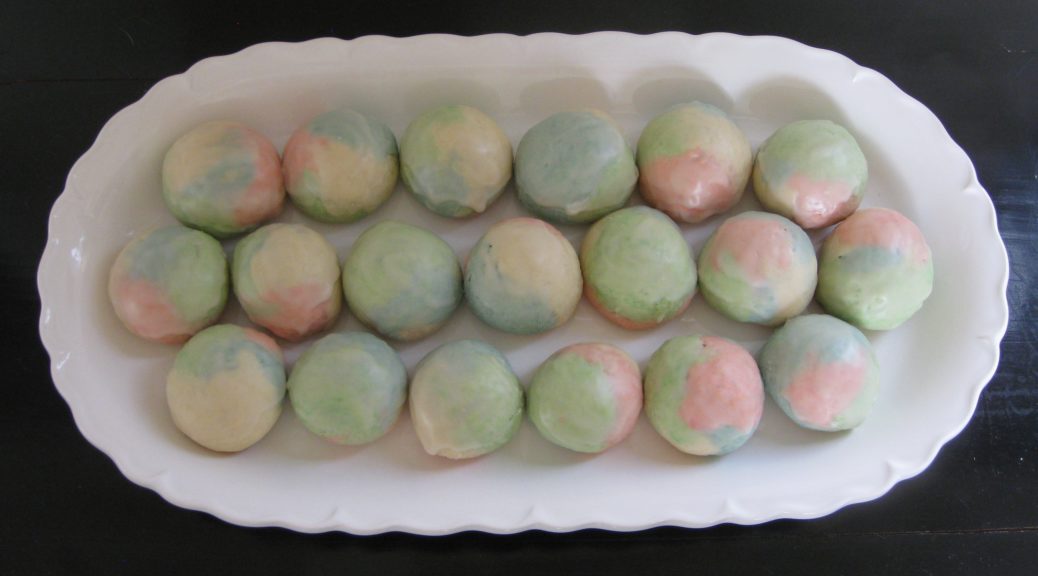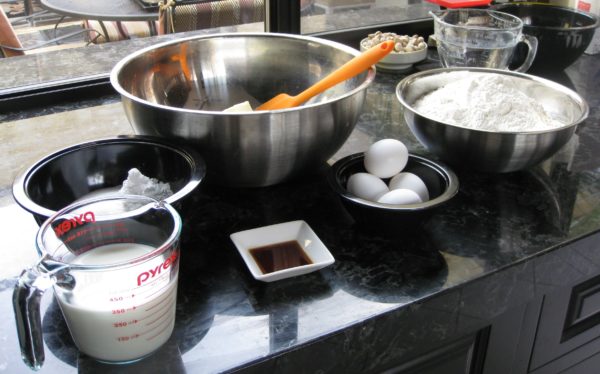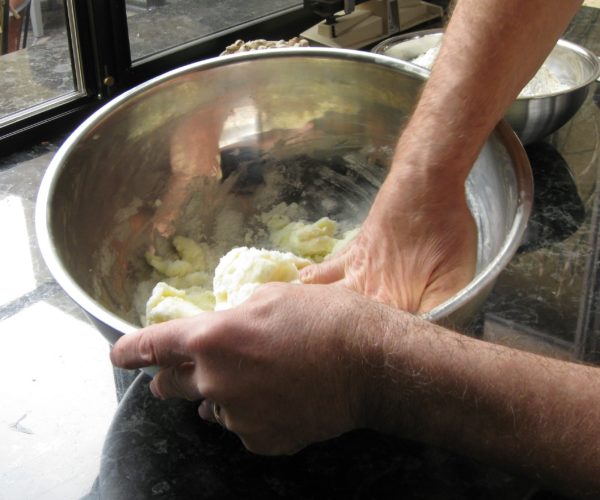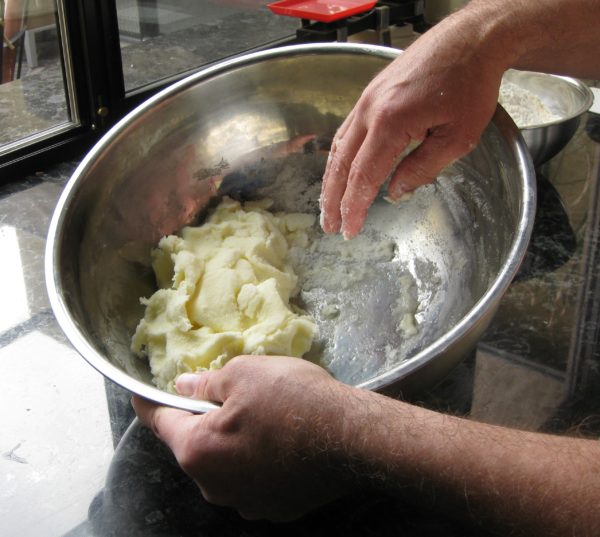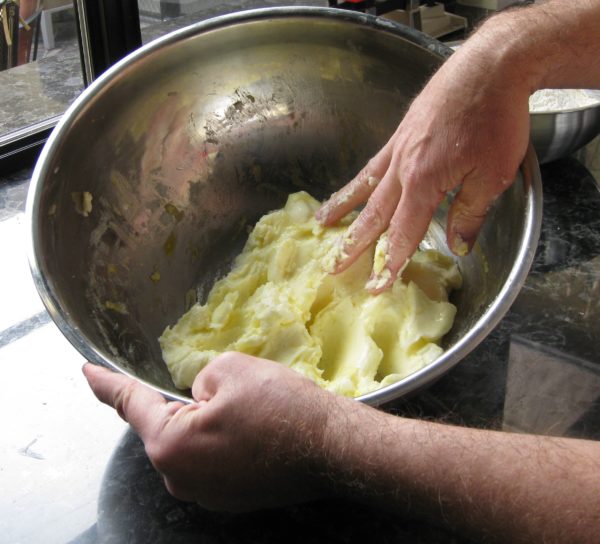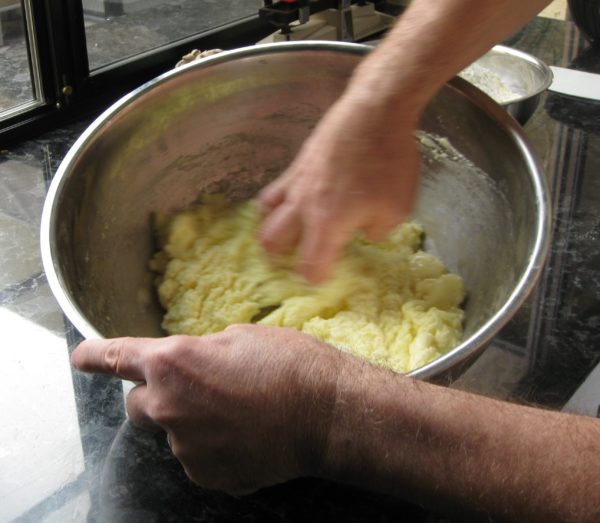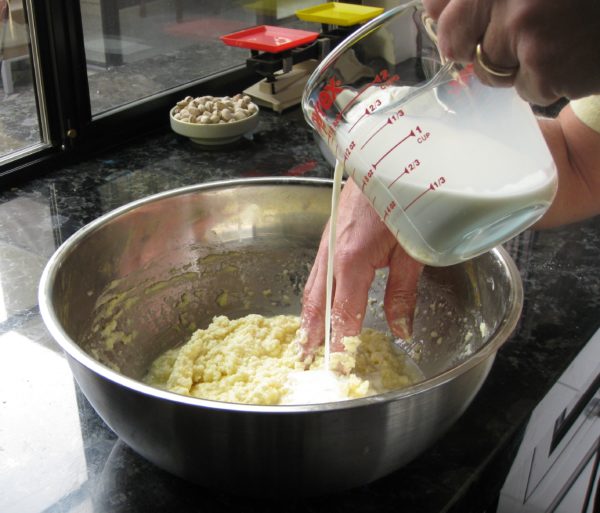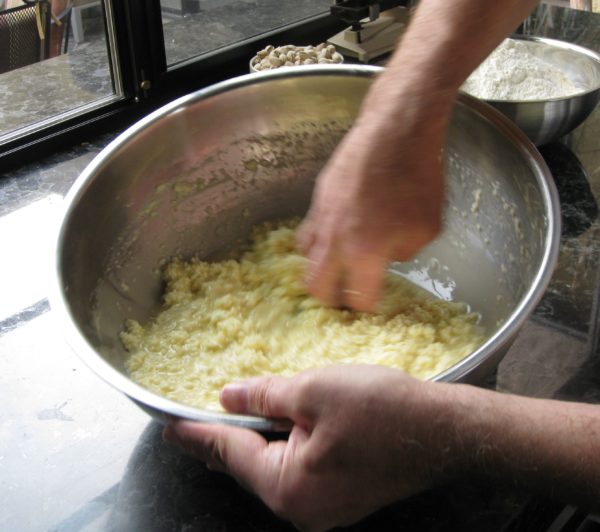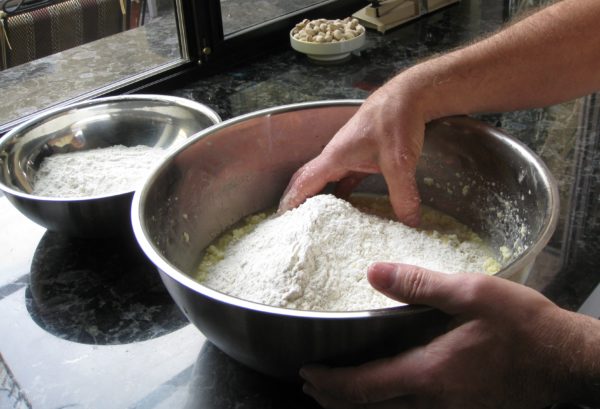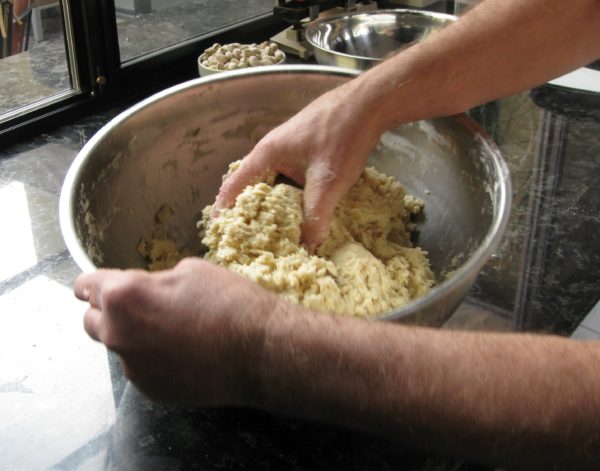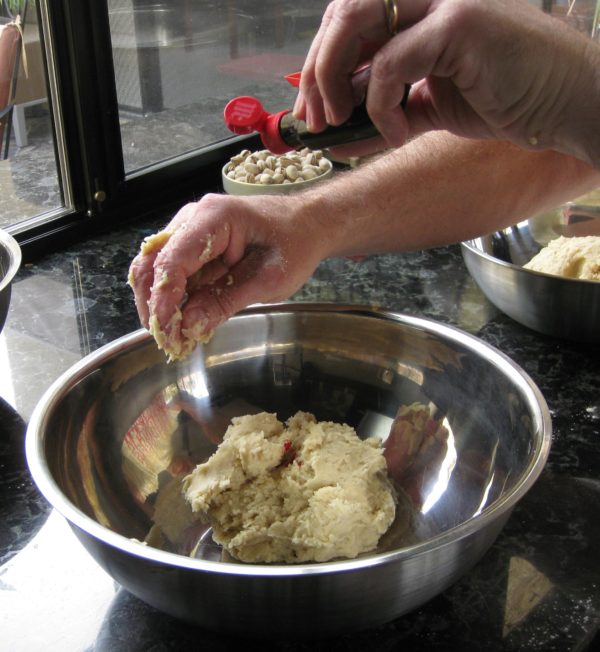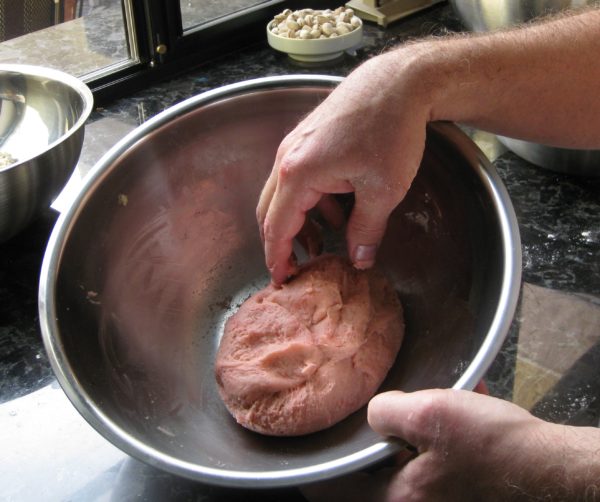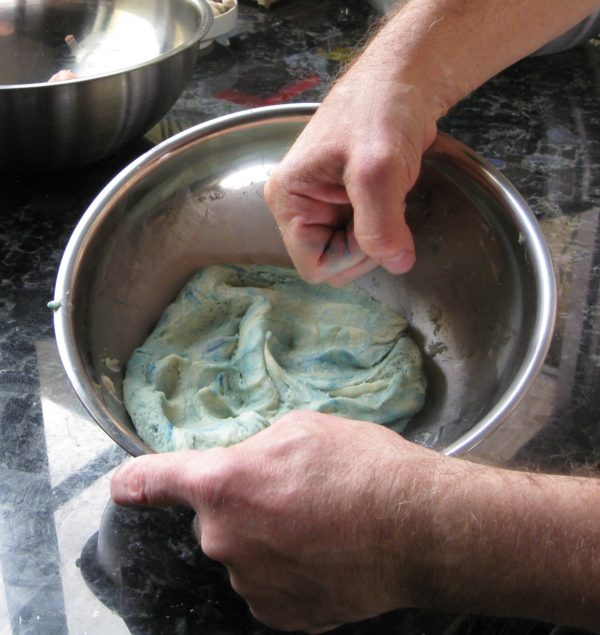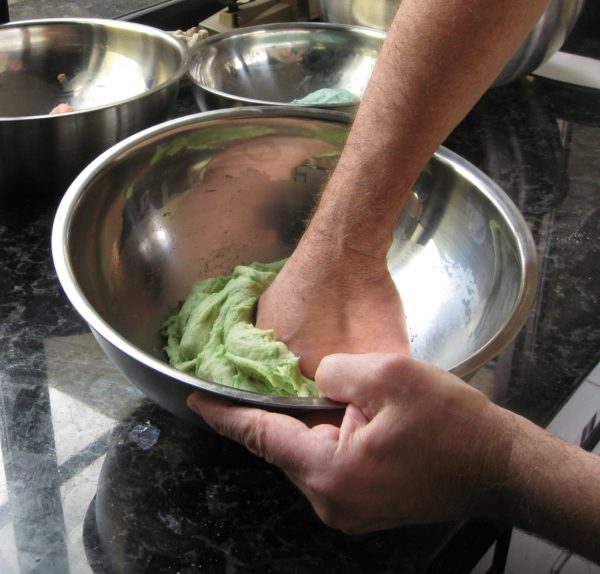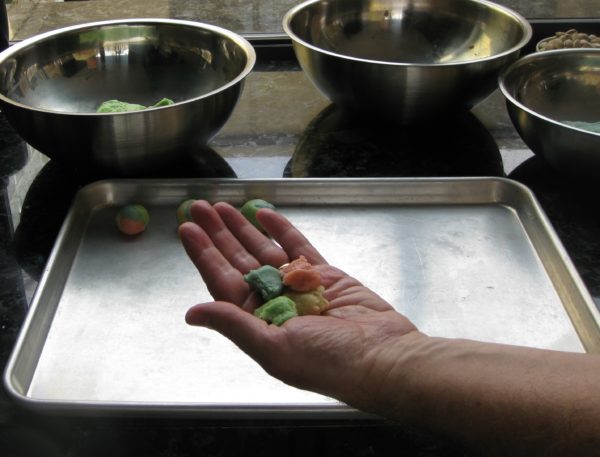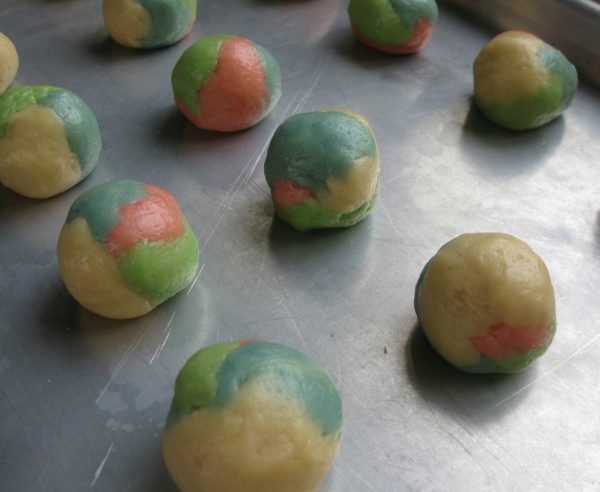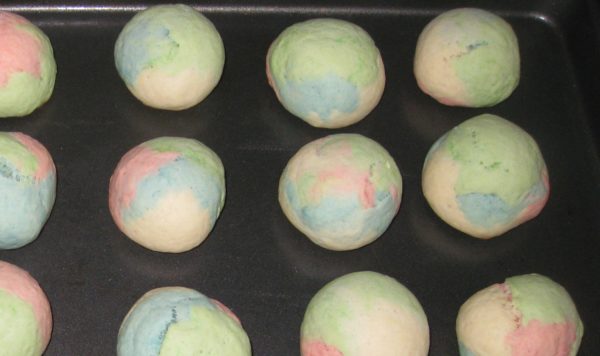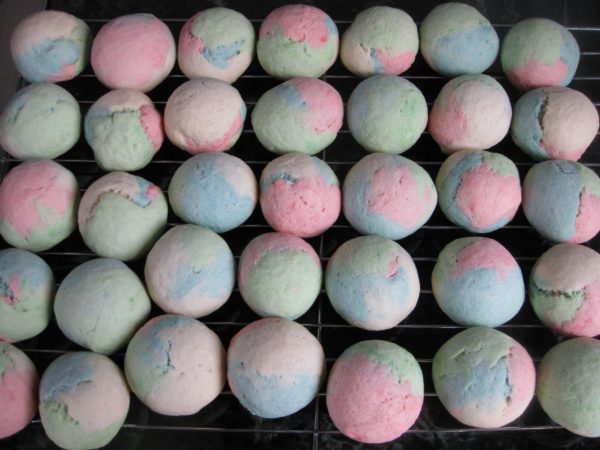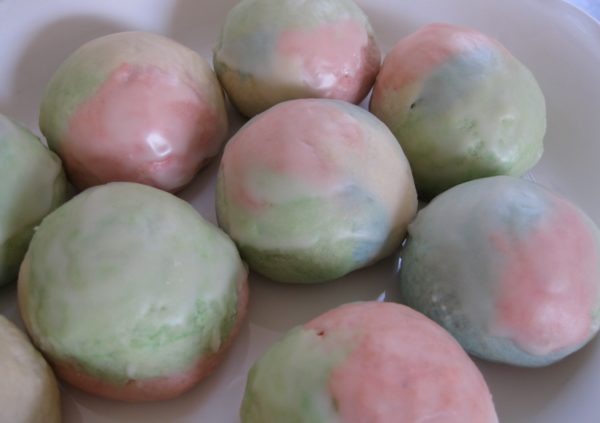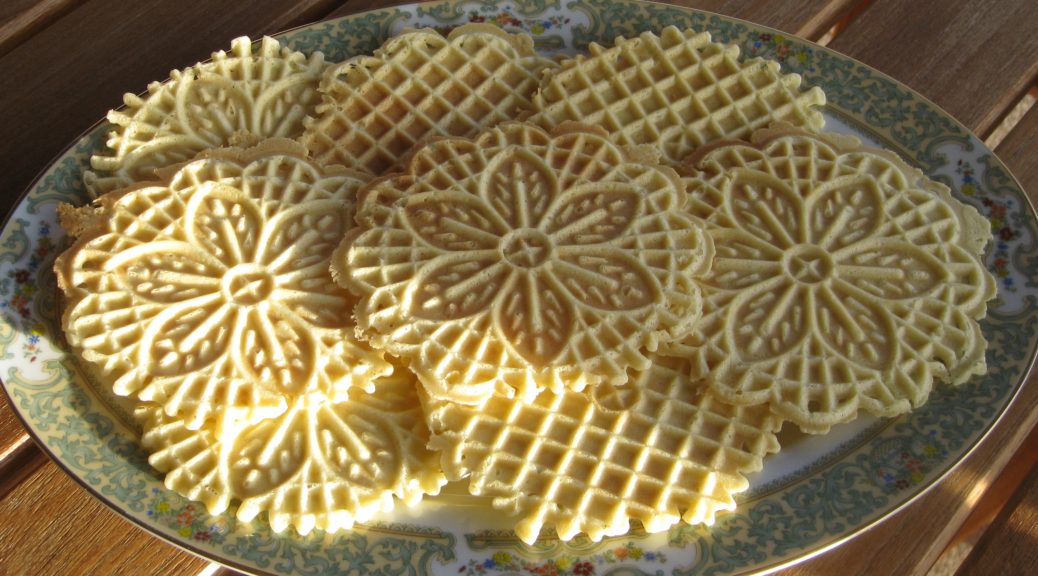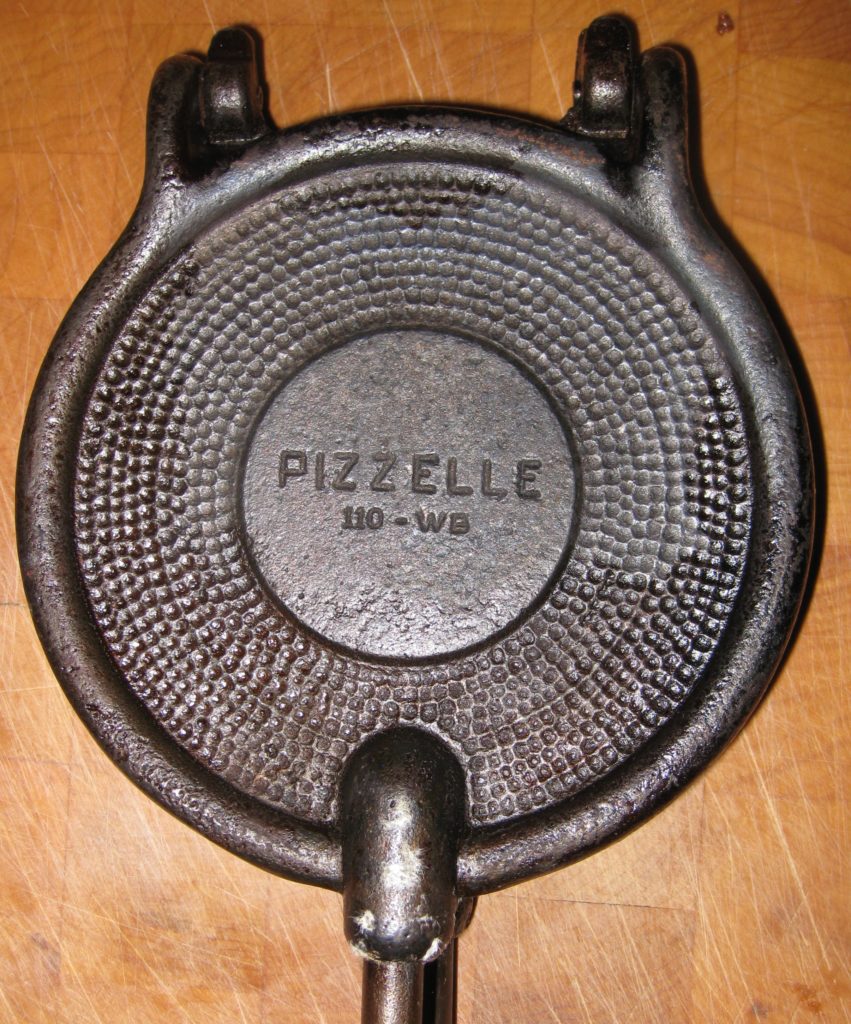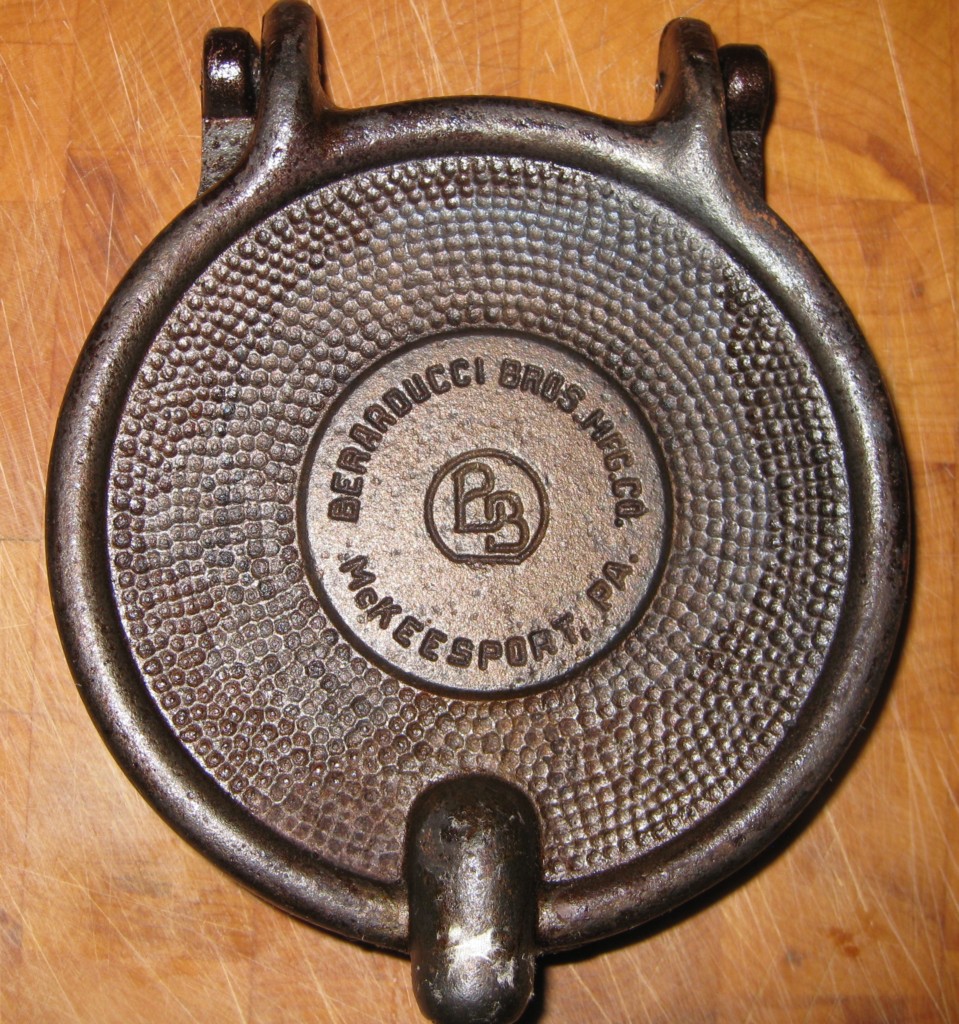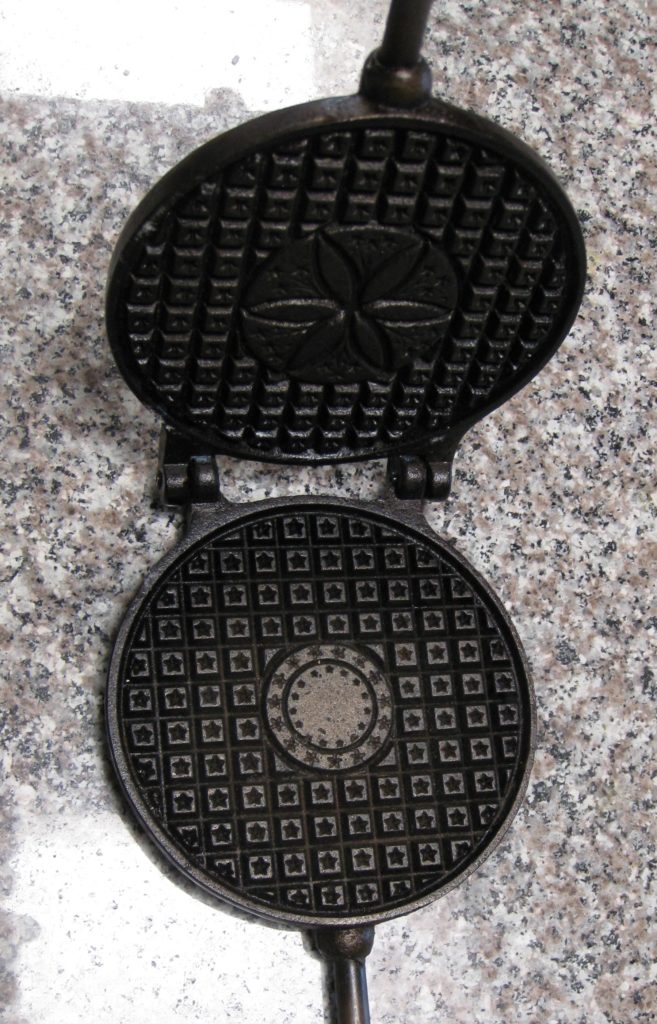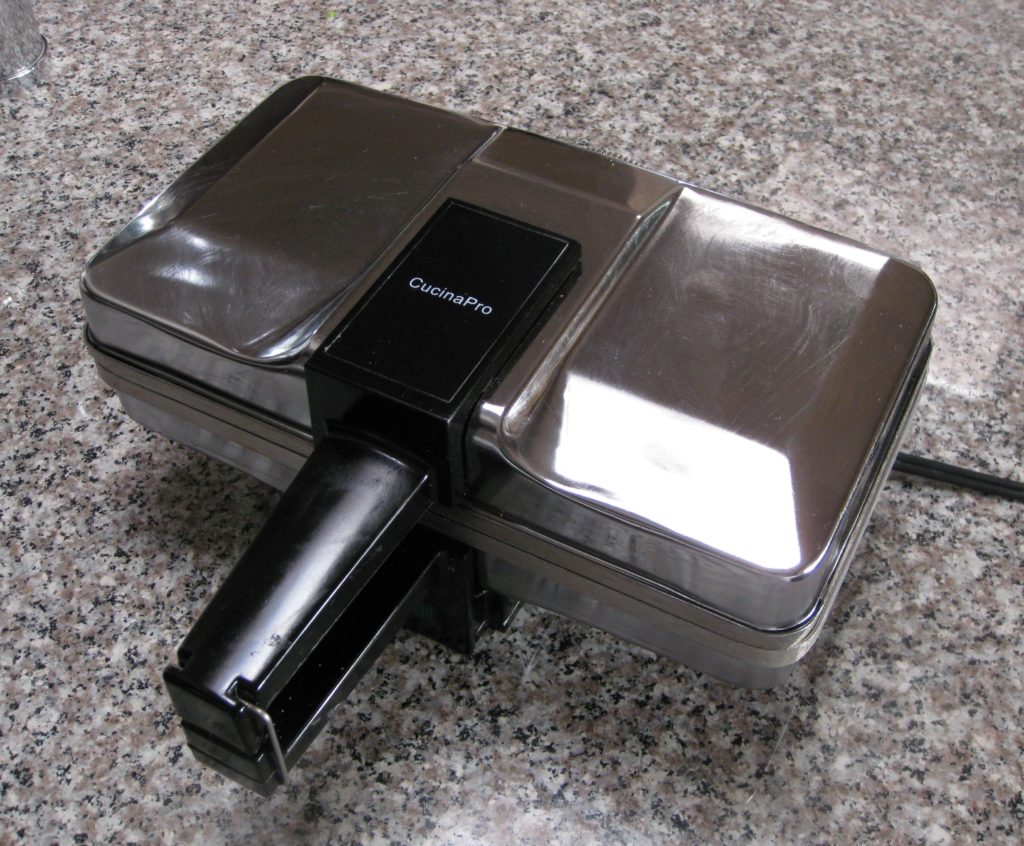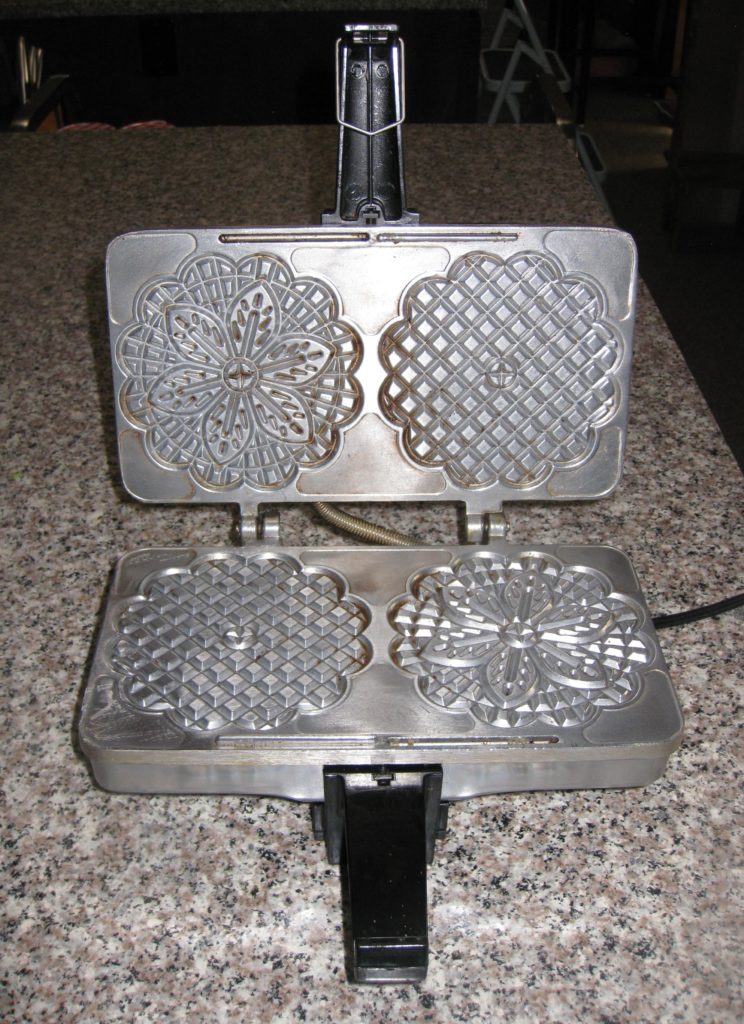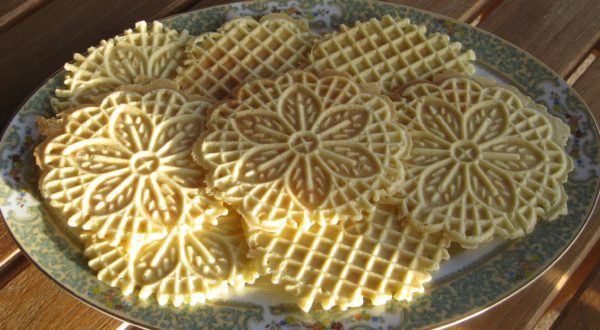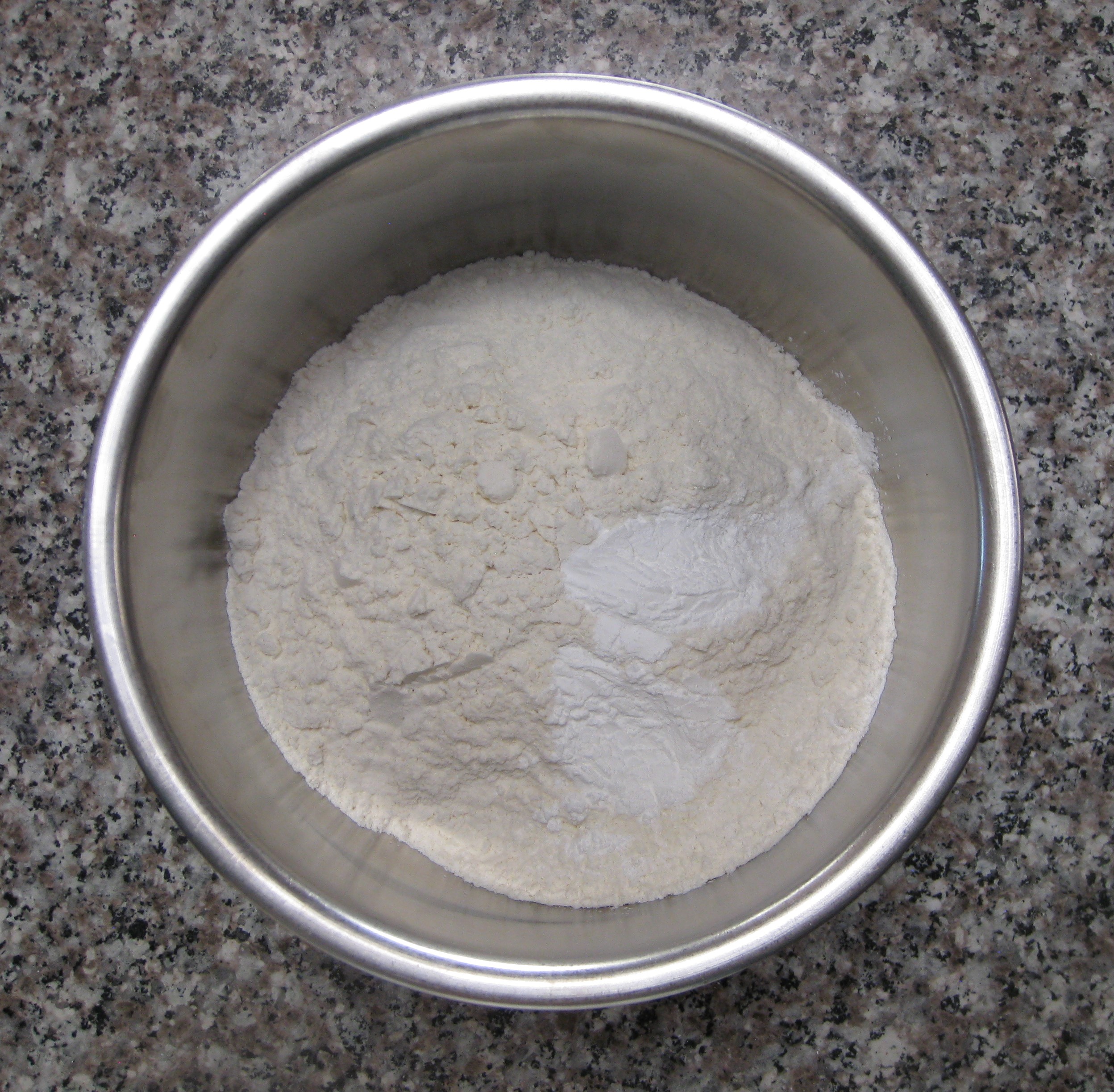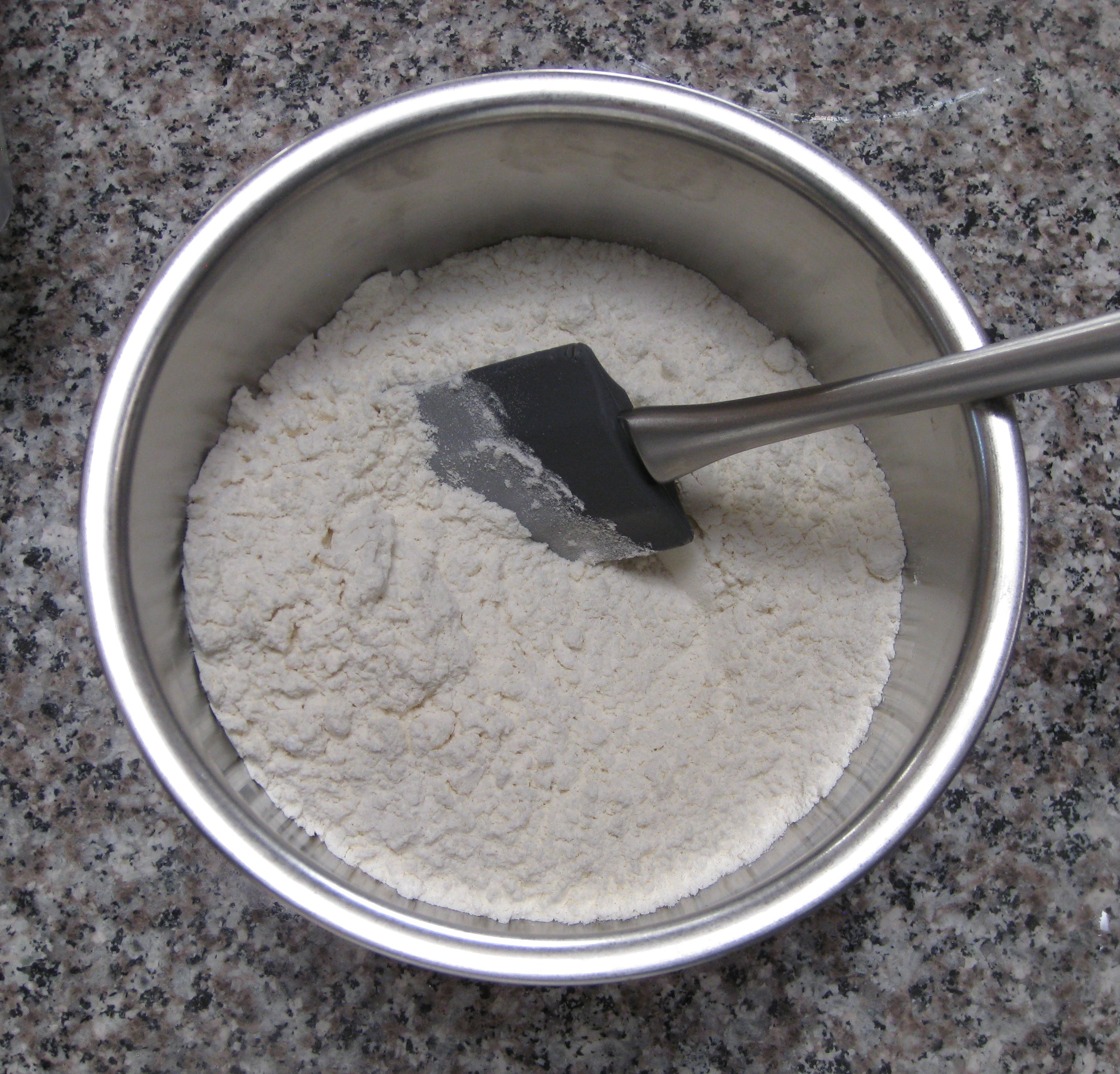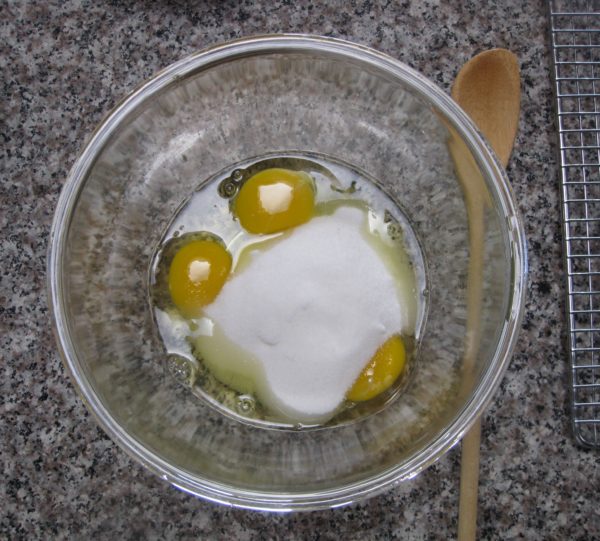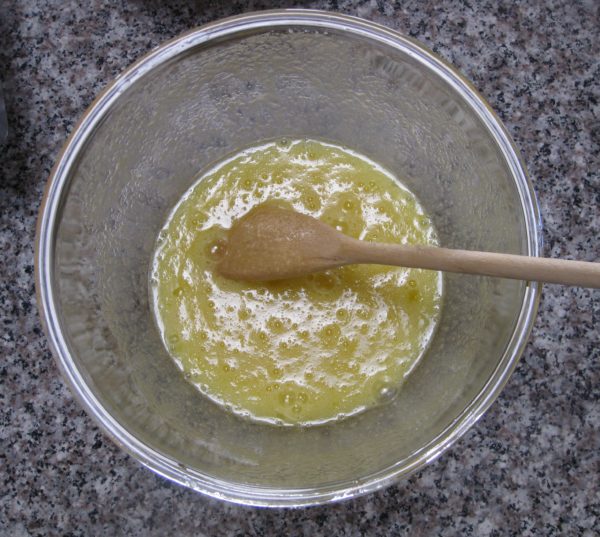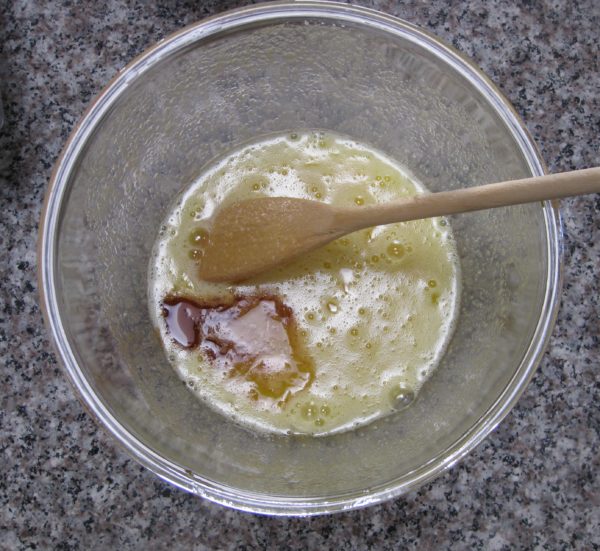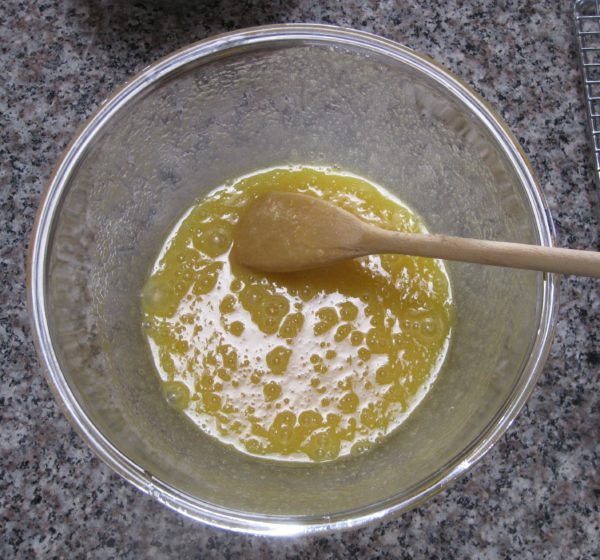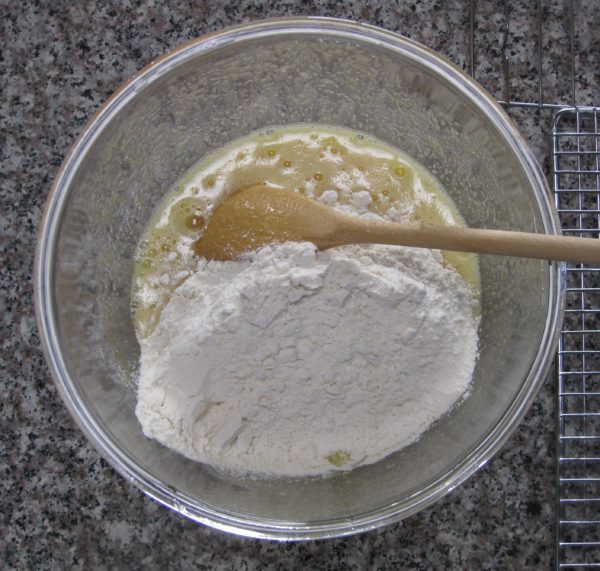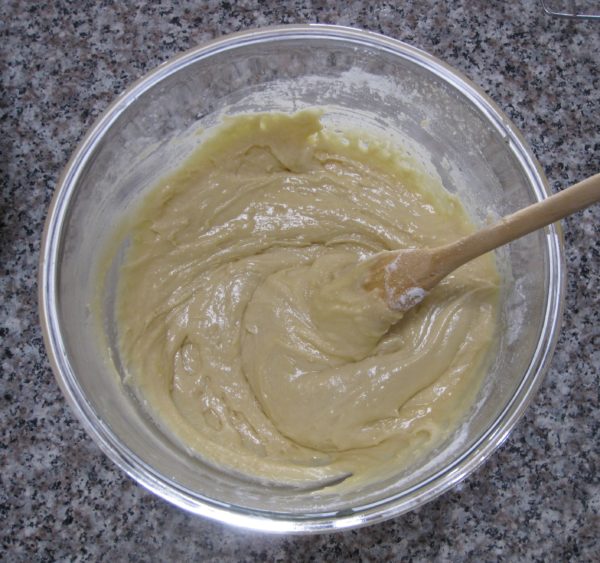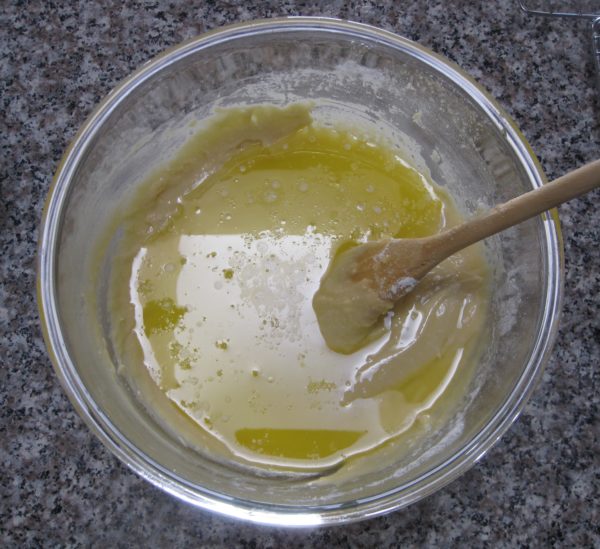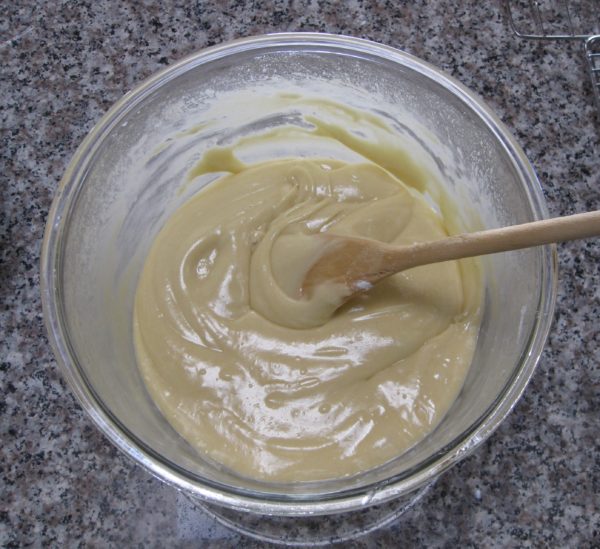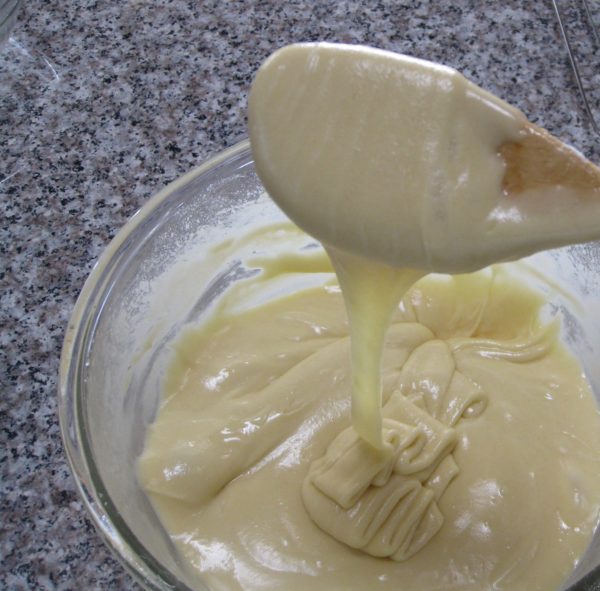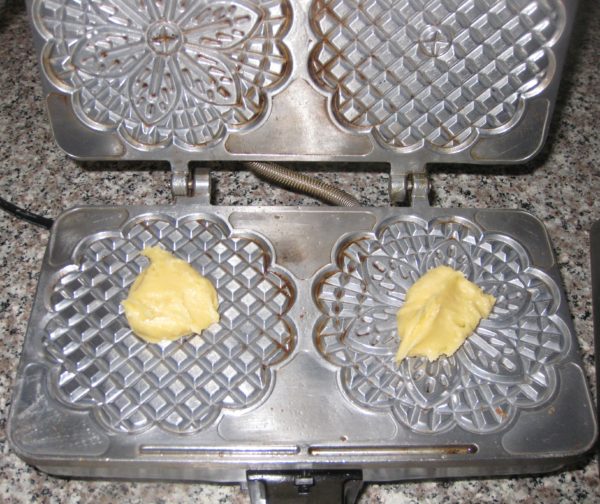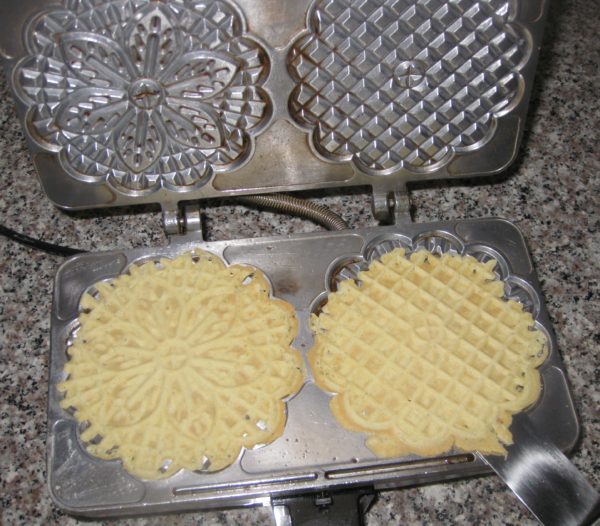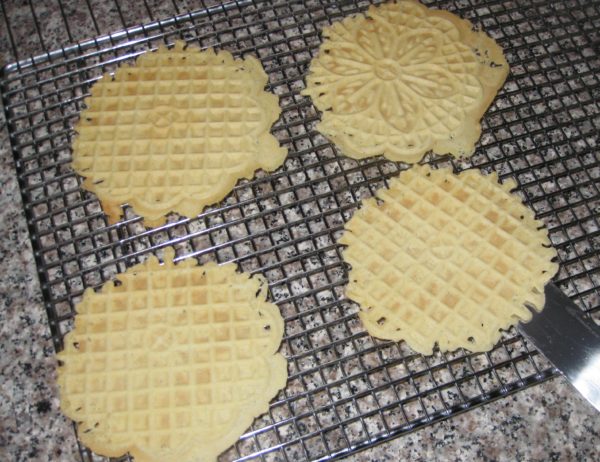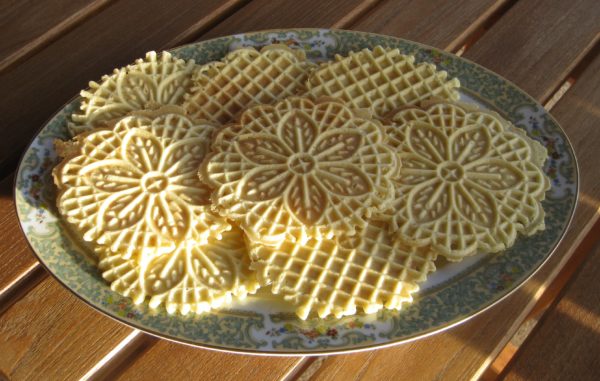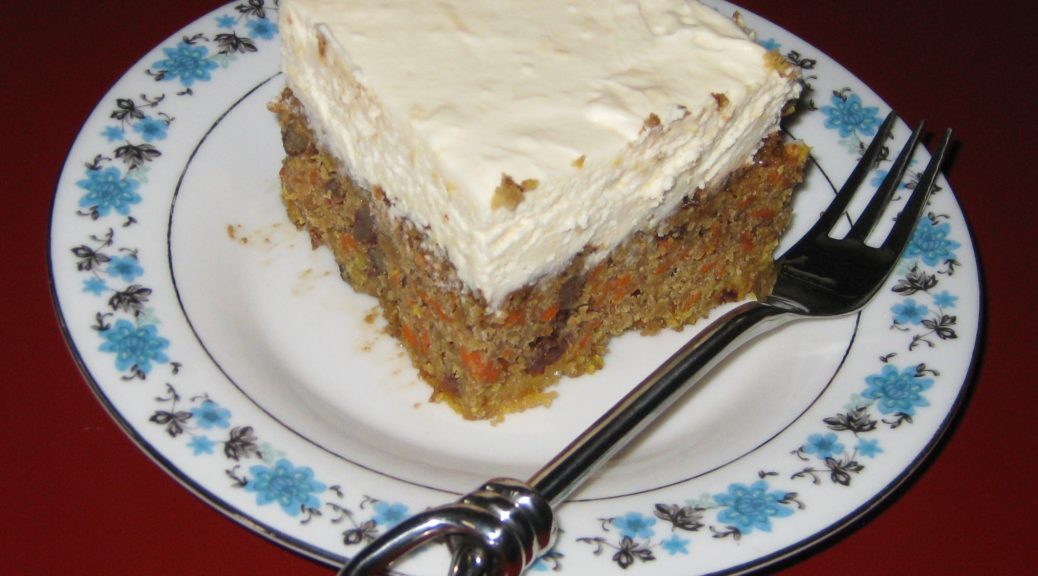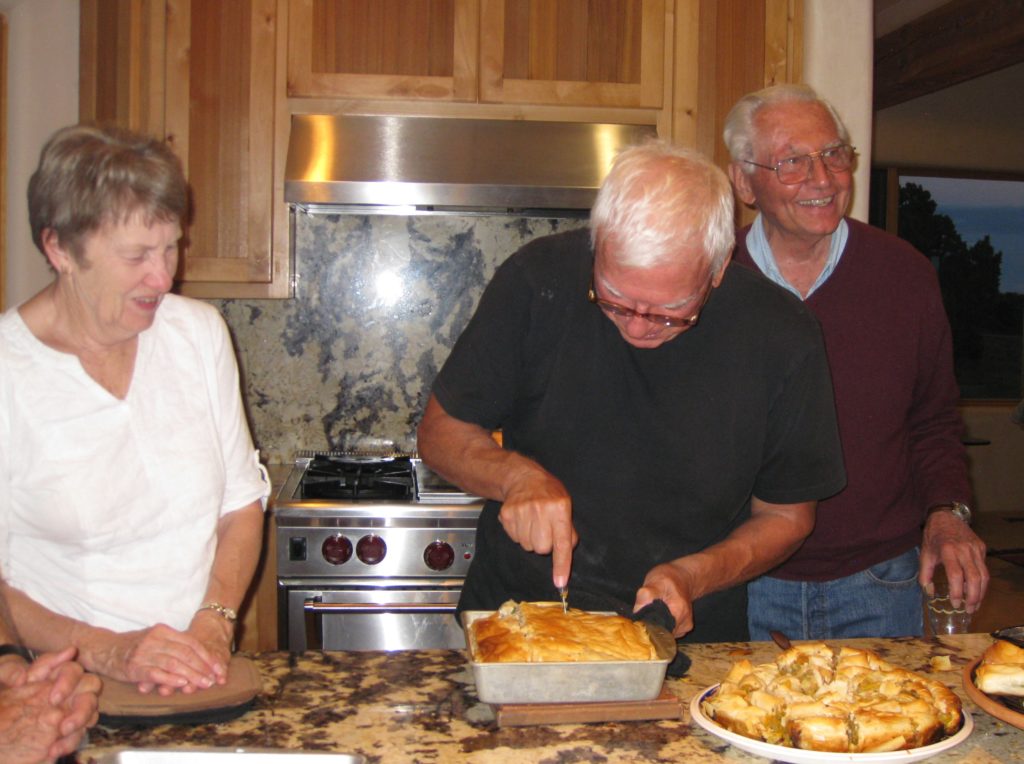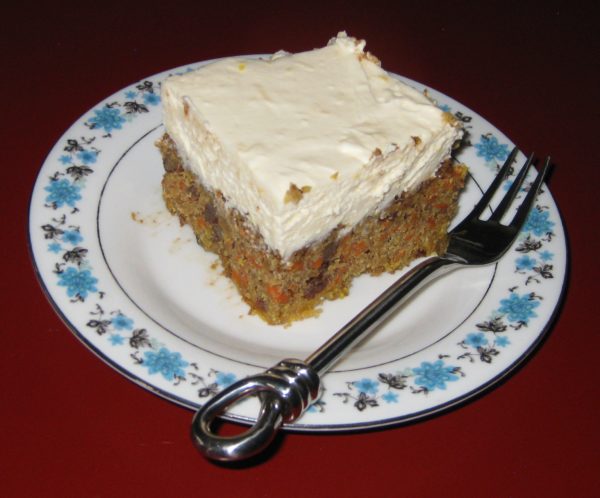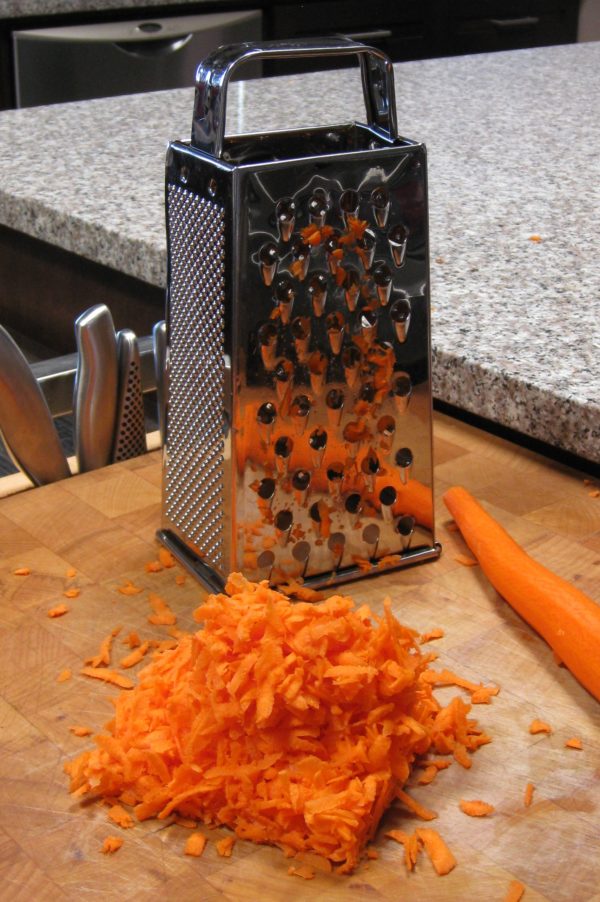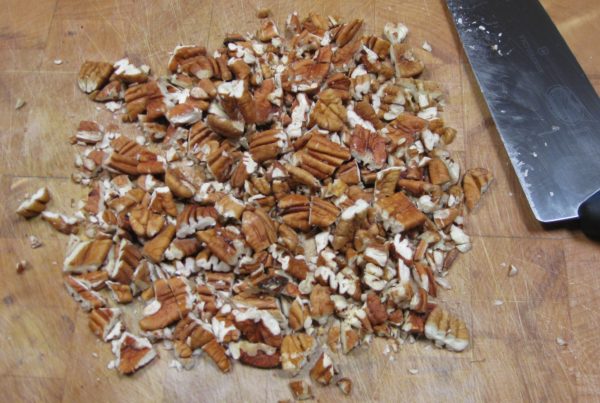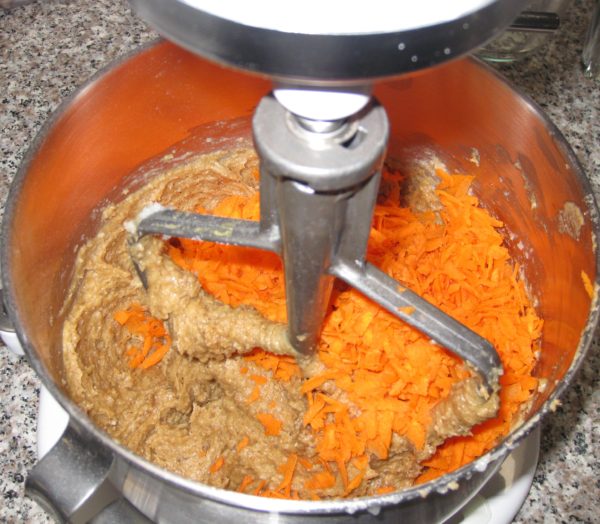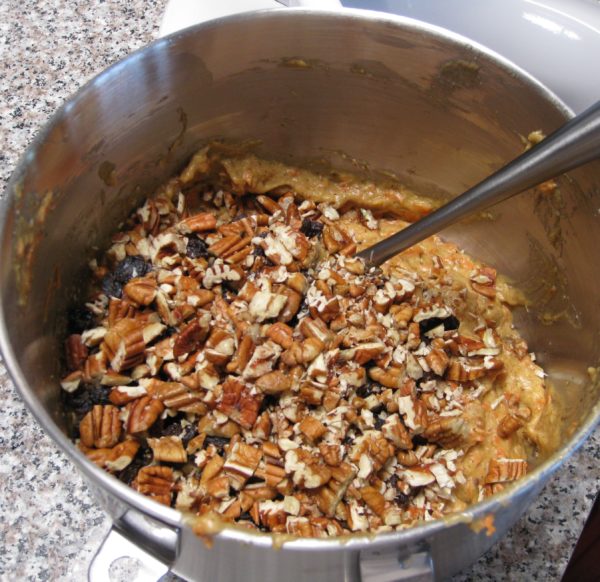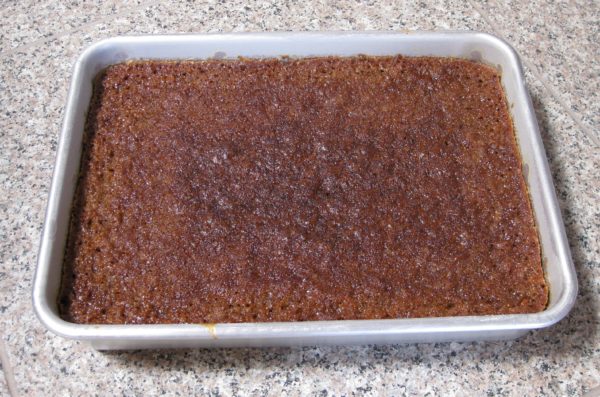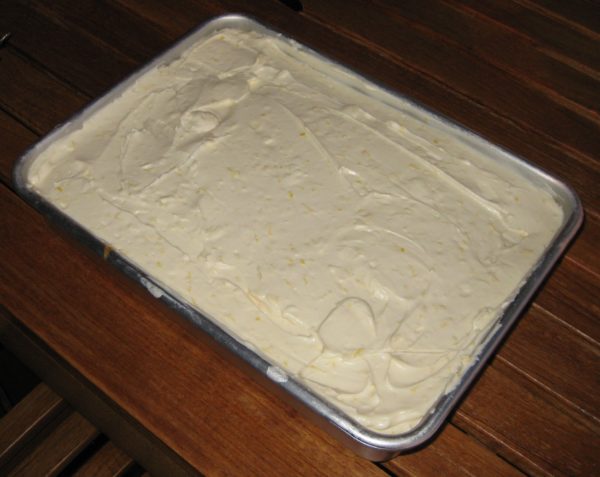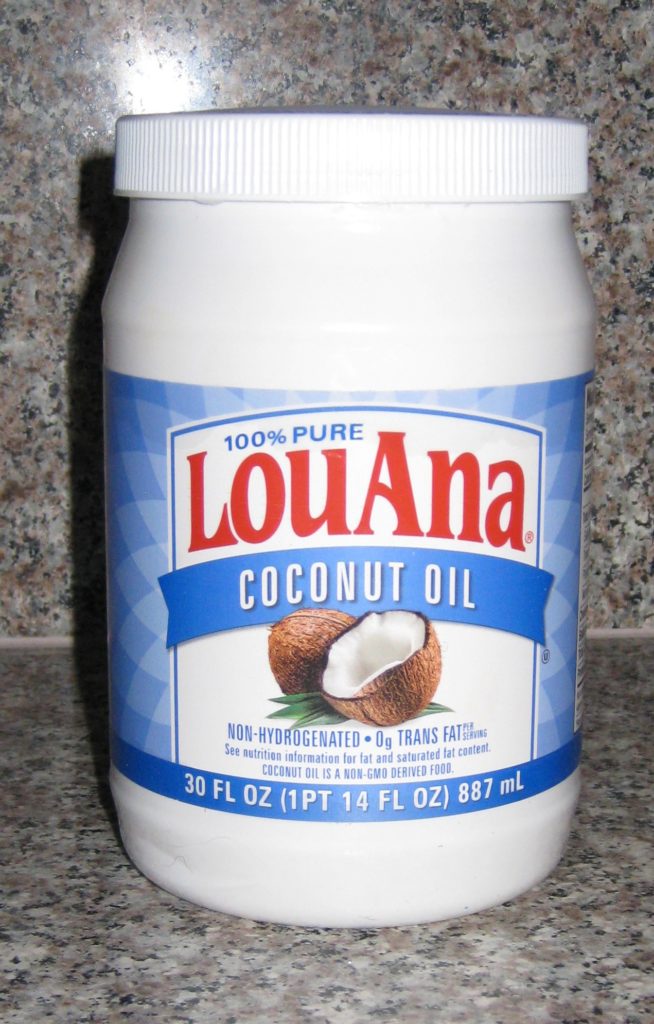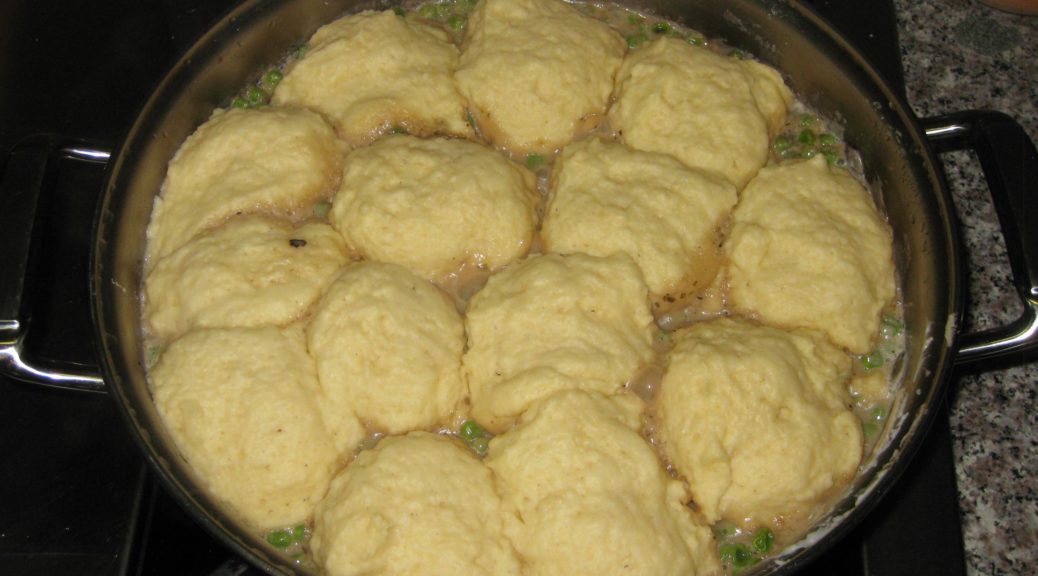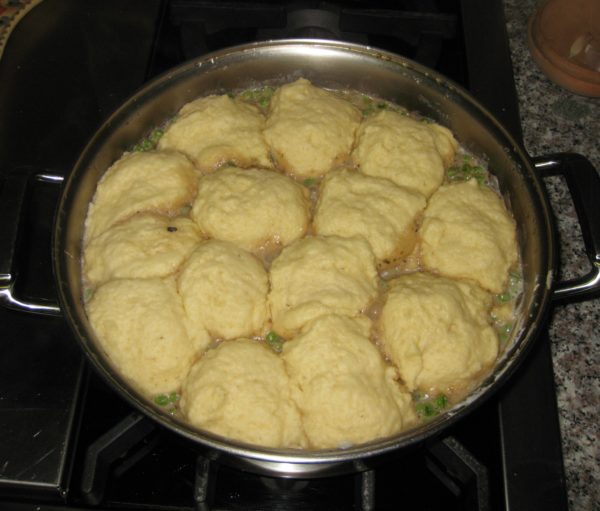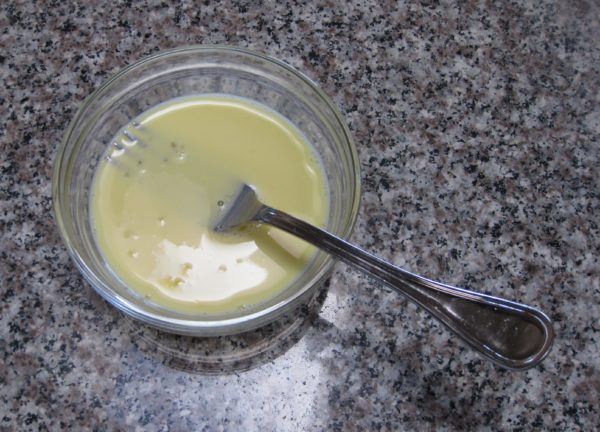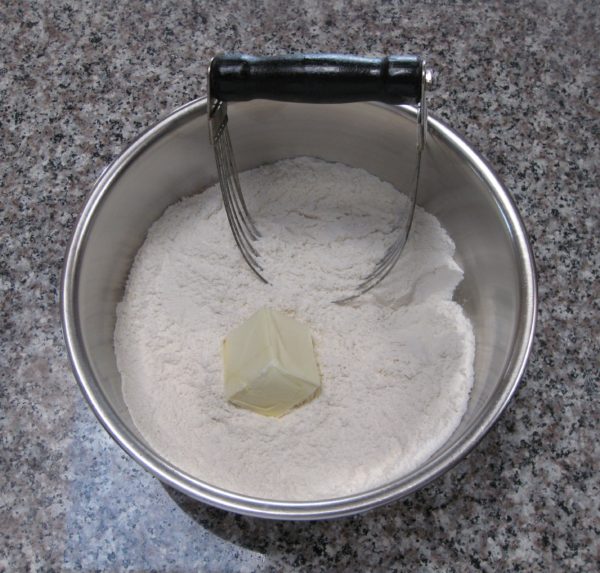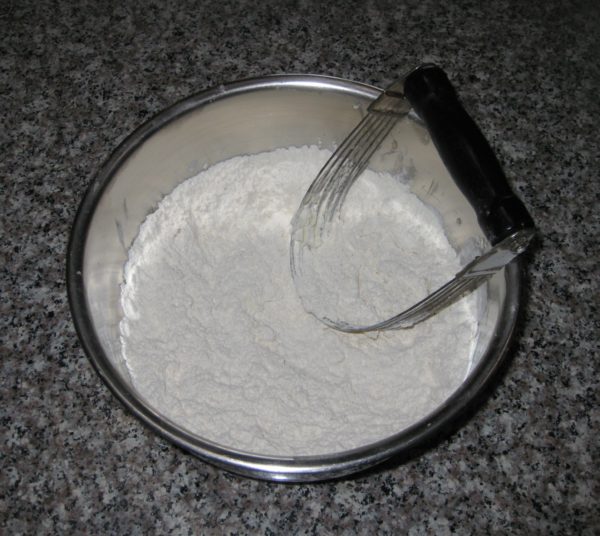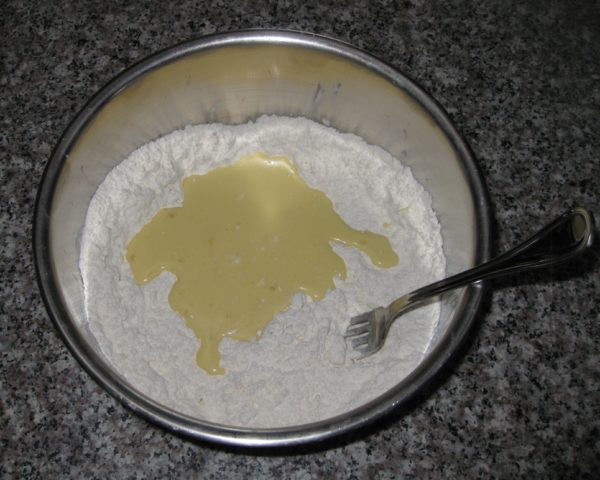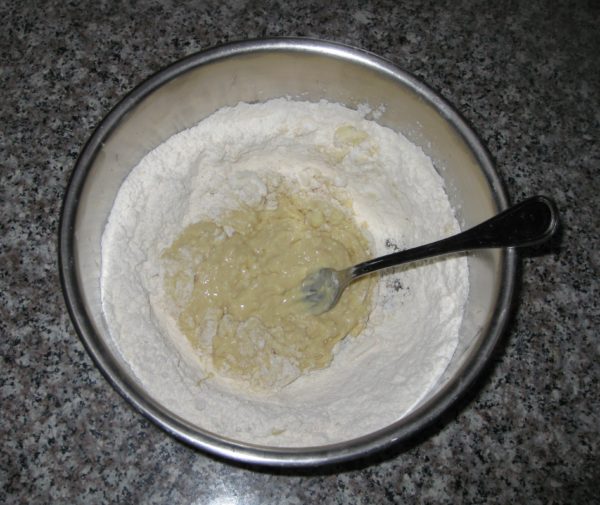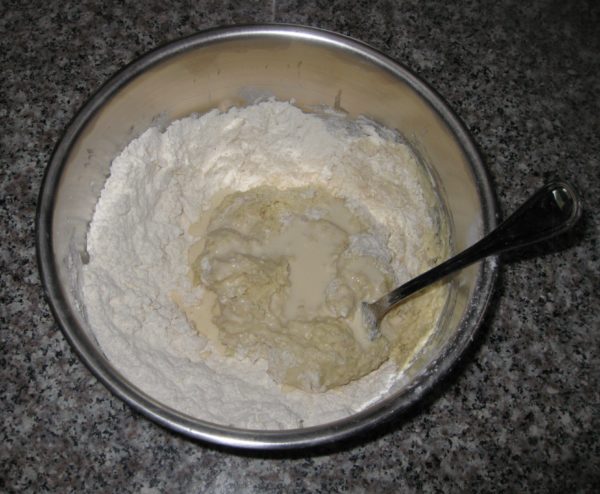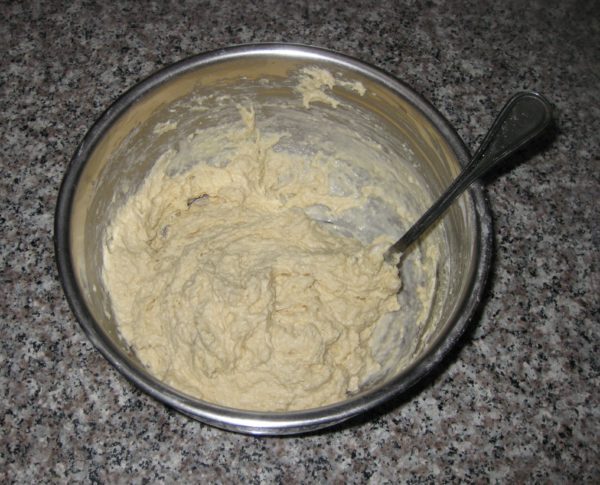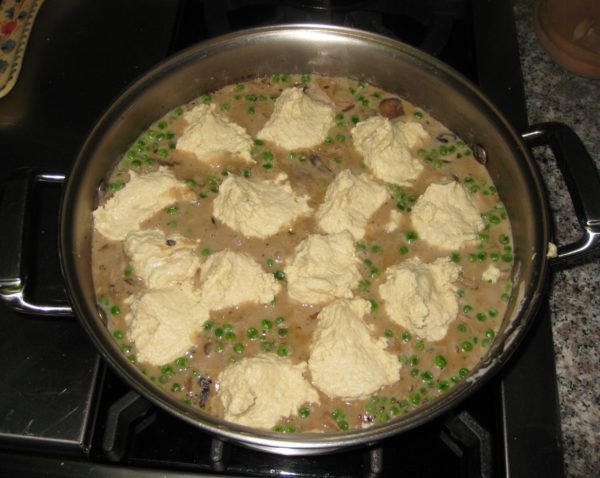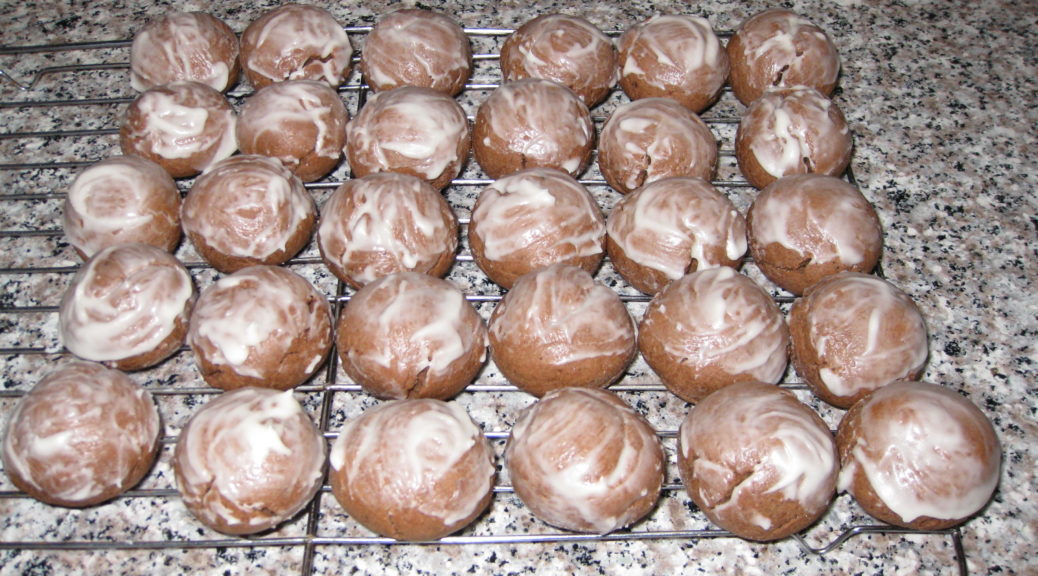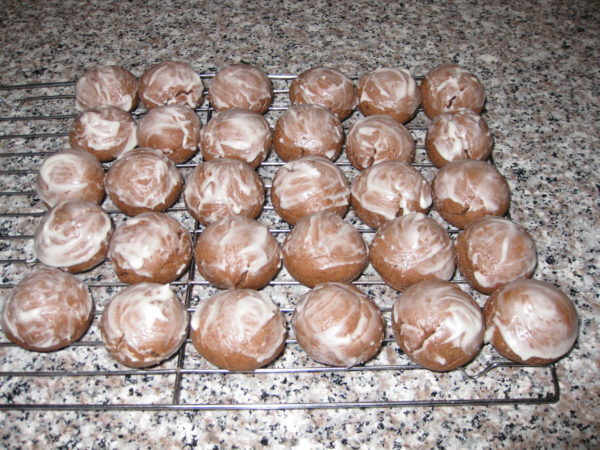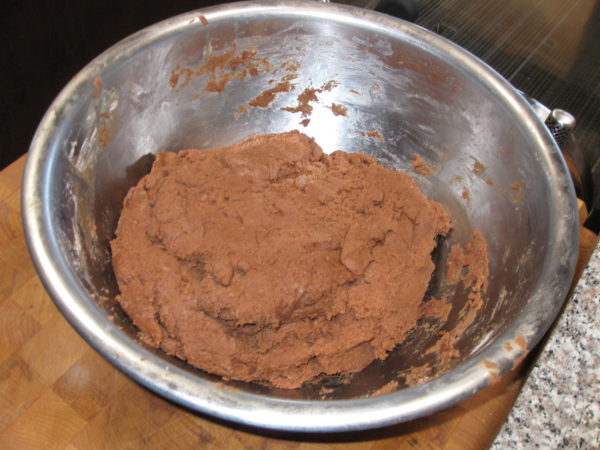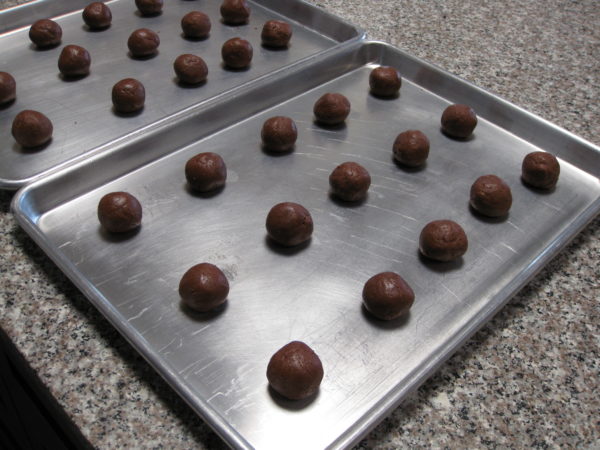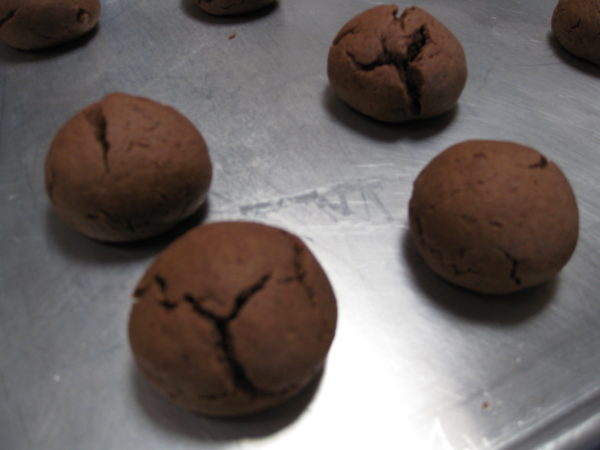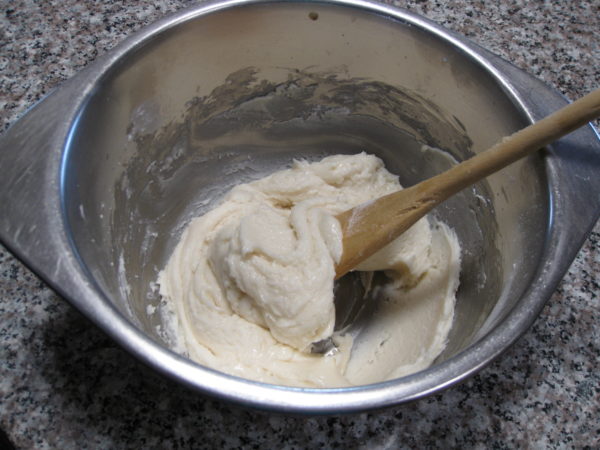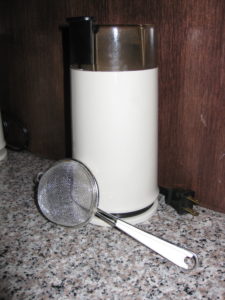December 15, 2017
We called them “Colored Cookies.”
I’ve never seen them anywhere but in my hometown of Johnstown, Pennsylvania though I can’t believe they are unique to there.
Truth be told, I don’t think I’ve ever had them made by anyone besides Aunt Margie until I made them from her recipe.

Many of the Italian and Italian-American cookies that I grew up with were cake-like. A stiff batter of flour, sugar, eggs, and fat (lard and butter were the most common), leavened with baking powder, flavored in some way (vanilla, lemon, chocolate and spice, sesame, and so forth), rolled or shaped and baked, and usually iced with a thin powdered sugar-milk icing that would harden to a glaze.
Follow us on your social media platform of choice
Totos are a perfect example of the chocolate and spice variety.
Anginetti (Genets, as we called them in Italian-American-dialect-slang) also referred to as Lemon Knots, are lemon flavored. Although I’m devoting most of December to posting Italian-American pastry recipes, Anginetti won’t appear until next year.
Sesame Seed Cookies (which certain members of my family like to dip in wine) have no flavoring other than the sesame seeds they are rolled in before baking. These are coming next December, too.
Click HERE to join our mailing list and you’ll never miss a recipe again!
Colored Cookies are flavored with vanilla despite the riot of color that might suggest otherwise. There was a brief period of time, however, when Aunt Margie got creative (read iconoclastic) and used coconut extract instead of vanilla. Coconut and almond are my two favorite flavors when it comes to sweets, leagues beyond chocolate and vanilla as far as I’m concerned, but coconut-flavored colored cookies strayed too far from tradition for my taste. It didn’t keep me from eating them, however!
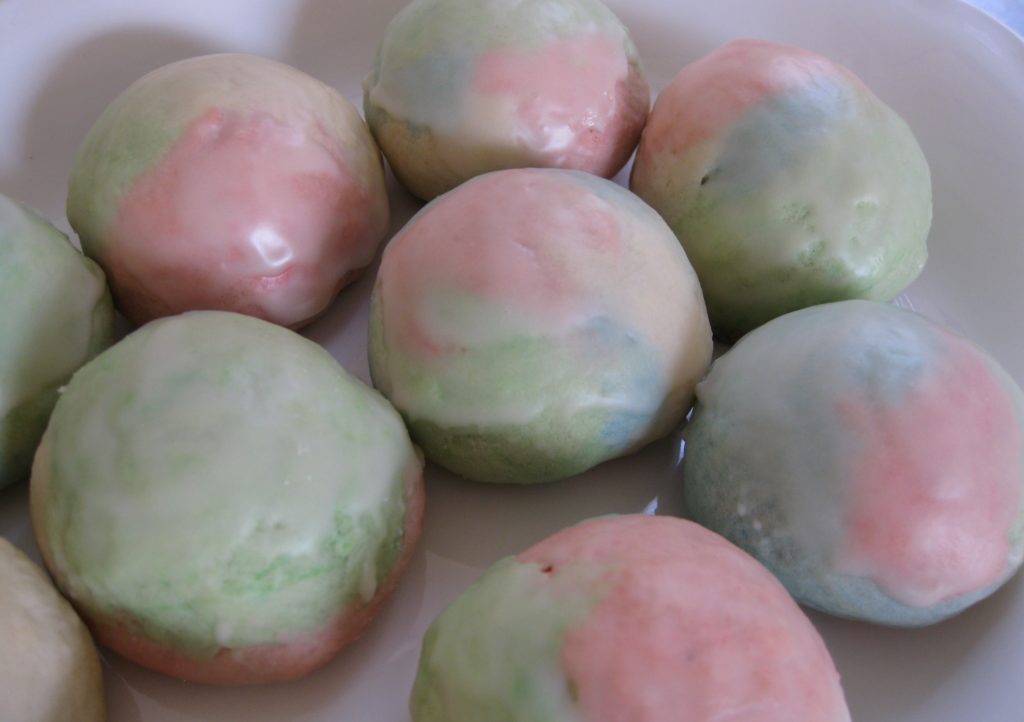
This is Aunt Margie’s original recipe. And if you flavor them with anything other than vanilla, please don’t tell me…just kidding!
If you have a favorite family recipe and a bit of a story to tell, please email me at santafecook@villasentieri.com and we can discuss it. I am expanding the scope of my blog to include traditional recipes from around the country and around the world. If you haven’t seen Bertha’s Flan, it will give you an idea of what I’m looking for.
I don’t use a lot of food coloring. The only other exception in recent memory (other than these cookies) was Jim’s Hawaiian Guava Cake. Take a look at my box of food coloring. The number 39 is the price: 39 cents! I’ve had it a long time, though I used up the red making the Guava Cake.
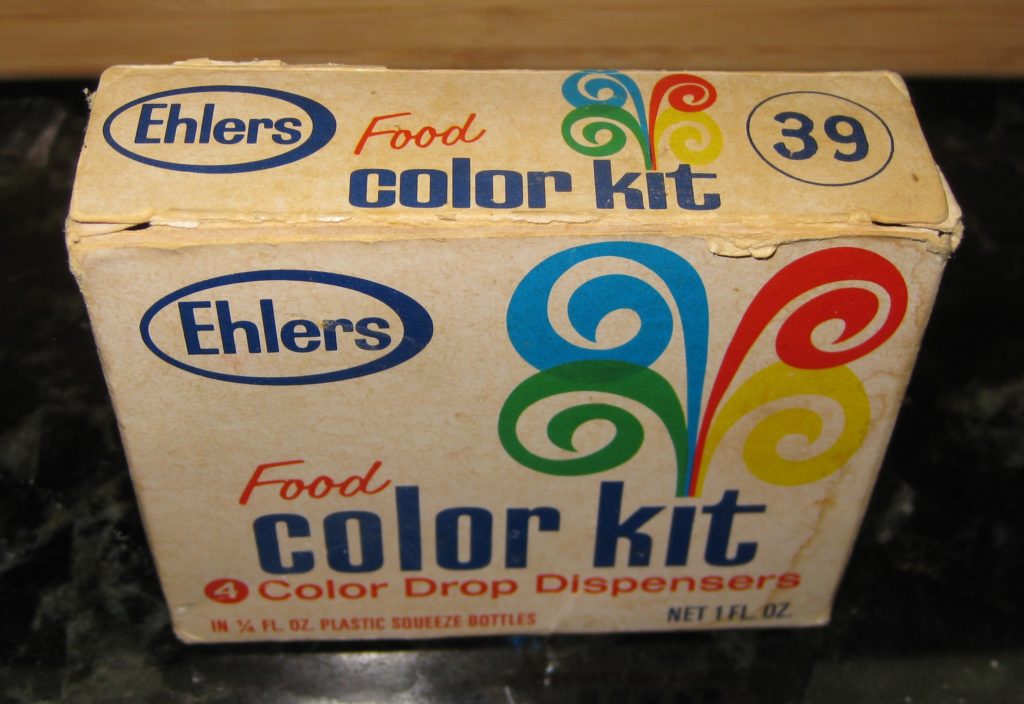
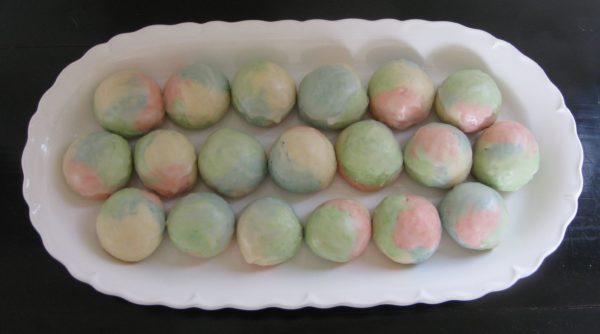
| Prep Time | 1 hour |
| Cook Time | 2 hours |
| Servings |
dozen
|
- 2 cups powdered sugar
- 1 teaspoon vanilla extract
- 3 tablespoons milk plus additional if needed
Ingredients
Icing
|

|
- Combine powdered sugar, vanilla and milk. Stir to combine.
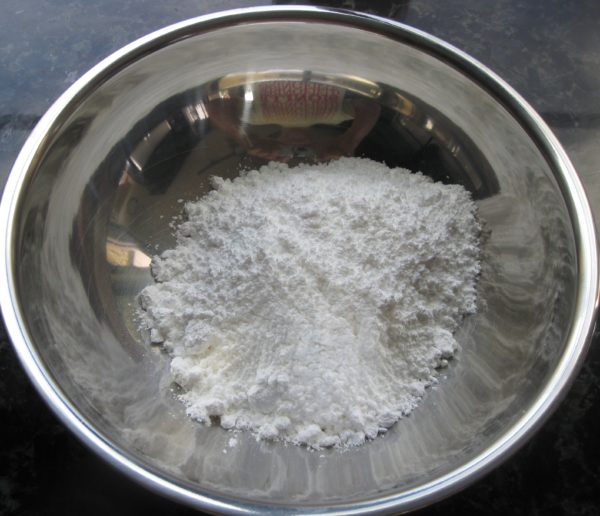
- Stir to combine.
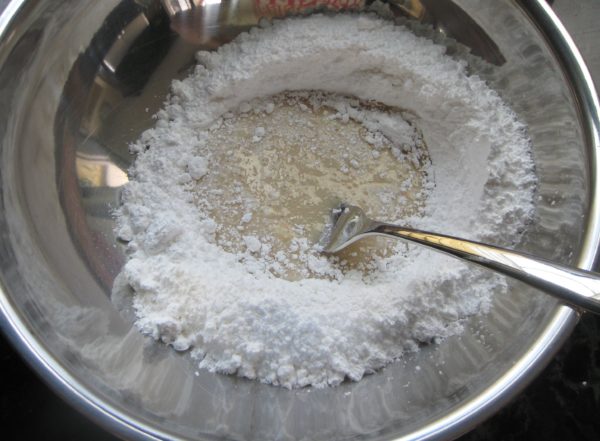
- Thin with a small amount of milk if needed. The icing should be of a spreading consistency.
Copyright © 2017 by VillaSentieri.com. All rights reserved.

